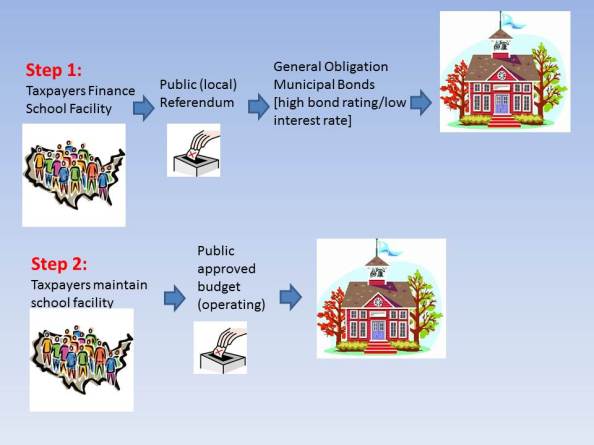We bought it twice but we no-longer own it: Is co-location the better option?
I’ve been spending much of my spring and summer trying to get a handle on the various business practices of charter schooling, the roles of various constituents, their incentives and interests – financial and otherwise – in the operations of charter schools. Throughout this process, I also try to consider how or whether similar practices and incentives exist for traditional district schools and private schools and how these markets intersect. There will be much more forthcoming on this blog, and in academic papers and reports in the next few months and year.
But one issue really struck me as particularly ludicrous as I spent more and more time drawing pictures and mapping out business relationships. I had avoided for the longest time digging into the weeds of charter school land deals and facilities financing. It’s messy and there are certainly plenty of fun scandalous news reports on the topic. But when I see this kind of stuff, I ask myself – what policies enable – or perhaps even encourage these things? Where’s the boundary between legally permissible and not… and between good policy and bad?
Here, I provide an example of something that’s just bad public policy. I can’t really say… except in one piece of this puzzle (as I’ve laid it out), that there are any truly bad, unethical, or illegal actors in this scenario. But the outcome is still bad… bad… patently… amazingly stupid public policy.
It all started way back…such a long, long time back…Way back in the days when the grass was still green, and the pond was still wet, and the clouds were still clean, and the song of the Swomee-Swans rang out in space…
Oh wait… wrong story….
Let’s go to the diagrams…
District controlled public school land and facilities are governed by the public that initially financed them. The public that financed these facilities and land acquisition typically did so by adopting in public referendum a promise to use their tax dollars (perhaps with support of state aid) to finance the debt required to buy the land and build the building. The public invested in the asset through debt financing, using low interest general obligation (GO) bonds.
Through annual budget approvals the public approved the maintenance of those facilities and their tax dollars were used to maintain their asset. The public invested in the maintenance of that asset through annual operating expenses of the district. Perhaps the public even approved additional debt financing along the way for improvements and renovations.
Many of these grand facades of public schooling were financed long enough in our past that we forget that they were financed with the tax dollars of previous generations and have been passed along and their care entrusted to the current generation.
Figure 1. The Initial Purchase & Maintenance
In many states, approval of charter schools to operate within district boundaries does not require local board or taxpayer approval. State government entities/appointees or elected bodies may serve as authorizers, and in some states, private entities and boards may authorize charter schools to establish, draw students and with them, public tax dollars for operating revenue/expense to support educational We bought it twice but we no-longer own it: Is co-location the better option? | School Finance 101:

